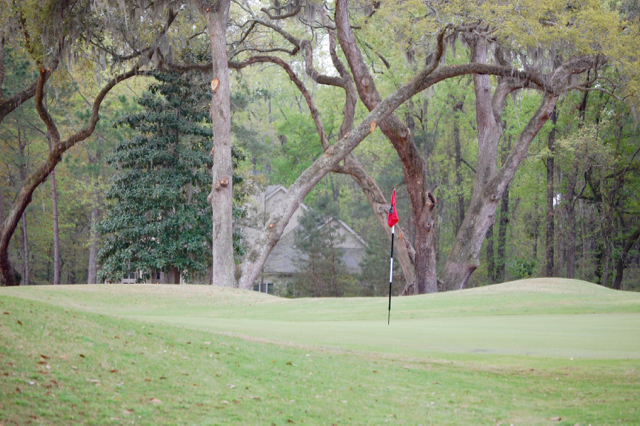I spent three days in the Greenville, NC, area this last week and can recommend it as a place to consider for retirement to a golf community. The three golf communities I visited -- Cypress Landing, Brook Valley, and Ironwood -- share a few qualities: Homes for sale in each are quite reasonably priced, in most cases well below $125 a square foot, land included; landscaping in these communities and around each home is impeccable, which shows a pride of ownership we don't always see in other communities; and the golf is excellent, although two of the layouts might not inspire single-digit handicap players (but will provide fun for mid-double digit handicappers).
The Ironwood Country Club course in Greenville, NC, was designed by Lee Trevino, but most holes move right to left, the opposite of Trevino's ball flight during his heralded professional career.
I'll have more to say about each of the communities in the coming week, but here are some thoughts about Greenville the city and its immediately surrounding areas. The city fathers might want to find some money to rehab the rundown industrial areas or, alternately, see if they can cajole GPS system operators to steer traffic around those areas. I stayed on the west side of town, and every programmed route from there to anywhere else in metropolitan Greenville took me through the sketchy industrial areas (as well as some marginal neighborhoods).
For those who live in one of the area's golf communities, the condition of the inner city of Greenville will not matter much. But those moving to the area with any health concerns at all will be bowled over by the size and comprehensiveness of the Vidant Medical Center just to the west of town. On an early morning drive-through, I could not believe how expansive and concentrated the medical facilities were, with signs on buildings that seemed to cover virtually every branch of medicine. I made inquiries during the week and learned that the medical center had lured world famous heart surgeons to the area by building a center dedicated to heart surgery. Vidant is adding a cancer center now as well. Retired couples who have any health issues might do well to consider the Greenville area as a destination.
Cypress Landing is located in Chocowinity, about a half hour drive from Greenville. Vidant maintains an outlet medical facility in Washington, NC, a charming little town three miles from Cypress Landing that has been touted nationally as a center for the arts (Cypress Landing residents participate in the arts scene). What is also nice about Cypress Landing and Greenville in general is that their locations -- Greenville just 30 minutes from Interstate 95 and Cypress Landing a few miles from U.S. Highway 17 -- make them relatively easy one-day drives to the Northeast and Middle Atlantic states.
Look for more on Cypress Landing, Ironwood and Brook Valley in the coming days.
























